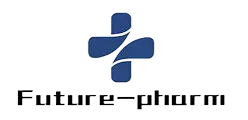
How to Optimize Your Supply Chain for Drug Raw Material Sourcing and Compliance
In today's highly regulated pharmaceutical industry, optimizing the supply chain for drug raw materials is critical for ensuring compliance and maintaining competitive advantage. According to a recent report by the Drug Enforcement Administration (DEA), the global market for pharmaceutical raw materials is projected to reach $250 billion by 2026, driven by increasing demand for high-quality medicines and stricter regulatory requirements.

The intricacies involved in sourcing drug raw materials can pose significant challenges, including quality assurance, cost control, and adherence to regulatory guidelines. To navigate these complexities effectively, companies must adopt strategic approaches to supply chain management that not only optimize sourcing but also enhance compliance with international standards.
By focusing on these areas, pharmaceutical companies can mitigate risks and ensure a reliable supply of drug raw materials, ultimately leading to improved patient outcomes and organizational success.
Strategies for Leveraging Digital Tools in Drug Raw Material Sourcing Efficiency
In today's fast-paced pharmaceutical landscape, optimizing your supply chain for raw material sourcing and compliance is essential. One key strategy involves leveraging digital tools to enhance efficiency. The emergence of AI agents is revolutionizing supply chain management, providing businesses with a "digital workforce" that can streamline operations. With the global market for AI agents projected to grow from $3.66 billion in 2023 to $139.12 billion by 2033, it's clear that adapting these technologies is no longer optional but imperative.
Tips for Leveraging Digital Tools:
First, assess your current supply chain processes and identify areas where automation can be implemented. Digital tools can help reduce manual errors and improve compliance tracking by providing real-time data access. Utilize AI-powered analytics to make informed decisions regarding sourcing and inventory management.
Second, invest in training your team to effectively utilize these advanced digital tools. Ensuring that your staff is well-equipped to operate AI agents will maximize their potential and integrate them seamlessly into your existing workflows. By fostering a culture of innovation and adaptability, your organization can stay ahead in the competitive pharmaceutical industry.

The Impact of Regulatory Compliance on Supply Chain Management in Pharmaceuticals
The pharmaceutical industry operates under stringent regulatory standards, making compliance a critical factor in supply chain management. Non-compliance can result in severe penalties, recalls, and damage to a company's reputation. Therefore, it is imperative for organizations to ensure that their supply chains are not only efficient but also fully compliant with the regulations governing drug raw materials. Understanding these regulations and how they affect sourcing decisions is vital for maintaining uninterrupted production and market access.
To enhance compliance, companies should prioritize regular training for their supply chain teams. This ensures that everyone involved is aware of the latest regulatory requirements and can identify potential compliance issues early. Additionally, establishing robust relationships with suppliers who demonstrate a commitment to compliance can mitigate risks. It is advisable to conduct regular audits and assessments of suppliers to ensure their practices align with regulatory expectations.
Another critical tip is to leverage technology to improve oversight and traceability within the supply chain. Implementing advanced data analytics and tracking systems can help companies monitor compliance more effectively and respond swiftly to any irregularities. By focusing on these strategies, pharmaceutical companies can optimize their supply chains while ensuring adherence to regulatory standards, ultimately leading to improved efficiency and reliability in drug production.
How to Optimize Your Supply Chain for Drug Raw Material Sourcing and Compliance
| Dimension | Factor | Metric | Compliance Impact |
|---|---|---|---|
| Supplier Selection | Quality Control | Defect Rate (%) | High |
| Inventory Management | Lead Time | Days | Medium |
| Regulatory Standards | GxP Compliance | Compliance Rate (%) | Very High |
| Risk Assessment | Supplier Audits | Audit Score | High |
| Traceability | Material Tracking | Traceability Index | High |
| Supplier Relationships | Communication Frequency | Weekly Interactions | Medium |
Analyzing Market Trends: How to Forecast Demand for Drug Raw Materials
As the pharmaceutical industry continues to evolve, understanding market trends is crucial for effective demand forecasting in drug raw materials. One essential approach is to conduct in-depth market analysis, which involves assessing historical sales data, regulatory changes, and emerging health trends. By identifying patterns in previous demand, businesses can more accurately predict future needs for various raw materials, ensuring they are well-prepared to meet market demands.

Additionally, leveraging advanced analytics and data science can significantly enhance the forecasting process. Techniques such as predictive modeling can help companies simulate various scenarios based on market fluctuations and consumer behavior. This enables firms to identify potential supply chain disruptions early, allowing for proactive measures to mitigate risks. Collaborating with suppliers to gain insights into their production capabilities and constraints also fosters a more informed approach to sourcing raw materials efficiently. By integrating these strategies, companies can better align their supply chain operations with the dynamic landscape of drug raw materials, ultimately leading to improved compliance and market responsiveness.
Utilizing AI and Data Analytics for Enhanced Supply Chain Transparency
As the global supply chain analysis market is projected to grow from USD 11.08 billion in 2025 to USD 32.71 billion by 2032, at a compound annual growth rate (CAGR) of 16.7%, the urgency for businesses to enhance transparency through AI and data analytics is clearer than ever. Companies are increasingly recognizing that leveraging AI can lead to superior data management and real-time insights, which are critical for navigating complex supply chains, especially in the drug raw materials sector. By utilizing advanced analytics, organizations can anticipate disruptions and ensure compliance with stringent regulations.
A notable example of this trend is seen in strategic partnerships aiming to boost supply chain transparency. For instance, companies are investing in traceability solutions to mitigate risks and reinforce compliance across their global value chains. This approach not only optimizes sourcing strategies but also enhances brand trust among consumers. As regulatory landscapes evolve, the integration of AI in supply chain operations will be pivotal in creating secure and efficient processes. Therefore, businesses that embrace these innovations stand to gain a competitive edge in a rapidly changing marketplace.
Supply Chain Efficiency for Drug Raw Material Sourcing
Best Practices for Collaborating with Suppliers to Ensure Quality and Compliance
Effective collaboration with suppliers is essential for optimizing the supply chain in drug raw material sourcing. Establishing clear communication channels is the first step toward ensuring quality and compliance. Both parties should engage in regular meetings to discuss expectations, share updates on industry regulations, and address any potential issues proactively. Utilizing collaborative technology platforms can facilitate real-time communication, making it easier to track order statuses, document any changes, and maintain transparency throughout the supply chain process.
Another best practice is to perform thorough due diligence when selecting suppliers. Evaluate their compliance history, quality control measures, and certifications to ensure they meet your operational standards. Implementing a structured supplier assessment process can help identify high-risk suppliers and mitigate potential disruptions. Additionally, fostering a culture of continuous improvement encourages suppliers to adhere to compliance standards while also exploring innovative solutions to enhance quality and efficiency. By building strong partnerships based on trust and mutual goals, companies can navigate the complexities of drug raw material sourcing effectively.
Related Posts
-

Navigating the Future of Best Pharmaceutical Materials in 2025 and How to Stay Ahead
-

5 Expert Tips to Source High-Quality Pharmaceutical Raw Materials in 2023
-

The Ultimate Guide to Sourcing the Best Pharmaceutical Materials for Global Procurement
-

How to Select the Right Pharmaceutical Chemicals for Your Manufacturing Process
-

Unique Uses of Pharmaceutical Chemical Powder in Modern Medicine: Unveiling Real-World Applications
-

Essential Guide to Sourcing Pharma Materials for Global Buyers
